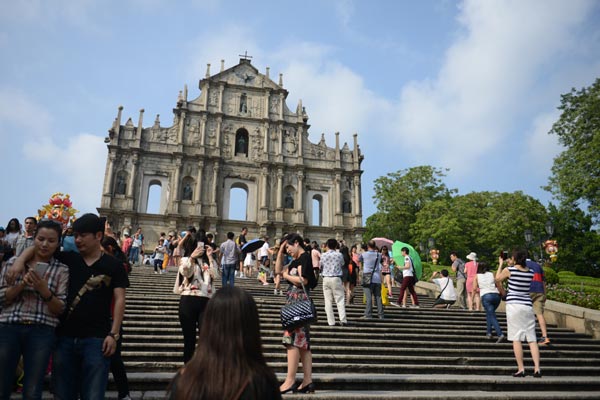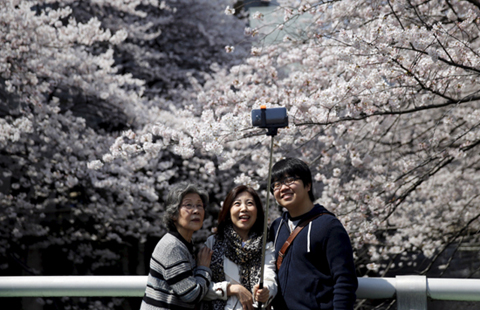Ciao, Macao
Updated: 2015-03-30 07:52
By Mike Peters(China Daily)
|
||||||||
 |
|
The Ruin of the Church of St. Paul is the grandest relic in Macao. Bruno Maestrini / China Daily |
Alatecomer to the Maritime Silk Road's history and lore, Macao made up for lost time quickly because of the 16th-century arrival of the Portuguese.
A mighty sea power that produced such navigators as Vasco da Gama and Ferdinand Magellan, Portugal took immediate advantage of the geographical position of the Macao-Manila route as a major gateway between China, Japan, India and the West.
By the late 1500s, Portuguese and other traders were taking silk, silver and porcelain from China to markets all over the globe.
The imprint of the seafaring Portuguese has made Macao a magnet for China's new traveling class and for international tourists.
On arrival, we're eager to walk what UNESCO has labeled the city's historic center, with its colonial-style streets and residential, religious and public Portuguese and Chinese buildings.
The grandest is a relic: the Ruin of the Church of St. Paul.
Designed by an Italian Jesuit, the church was built in 1602 by Japanese Christian exiles and Chinese craftsmen. It was destroyed by fire in 1835-all except for the imposing facade, which has given the church a chance to live on in selfies taken by the tourists who swarm to see it.
China's first Western-style theater, university, hospital, churches and fortresses are here. Many are still in use and standing side by side with equally compelling Chinese buildings. Such colonial architecture, from grand church edifices to charming residences in back lanes, sets this community apart from nearby Hong Kong and Guangzhou.
Like many visitors, we were surprised to find Macao is not a single island but has three distinct parts: the Macao Peninsula (where most of the historical sites are) and the islands of Taipa and Coloane.

 US 'willing to work with AIIB': Lew
US 'willing to work with AIIB': Lew
 Elderly care explored for investors, neeedy
Elderly care explored for investors, neeedy
 Sasha Obama took trip to China
Sasha Obama took trip to China
 10 European countries applying to join AIIB
10 European countries applying to join AIIB
 Things are not always what they seem on April Fool's Day
Things are not always what they seem on April Fool's Day
 Welcome cherry blossom season in Tokyo
Welcome cherry blossom season in Tokyo
 Students show support for Earth Hour
Students show support for Earth Hour
 Sleep with fish at Tianjin aquarium
Sleep with fish at Tianjin aquarium
Most Viewed
Editor's Picks

|

|

|

|

|

|
Today's Top News
US 'willing to work with AIIB': Lew
Silk Road connects China to the world
Washington 'willing to work with AIIB'
One dead, two hurt as vehicle tries to ram US spy agency gates
Yili Group milks world of industry experience
China's GDP growth likely to rise to 7.2% in Q2
Chinese woman charged with fraud remains in jail
Focus shifts to cause of NYC explosion after 2 bodies found
US Weekly

|

|







